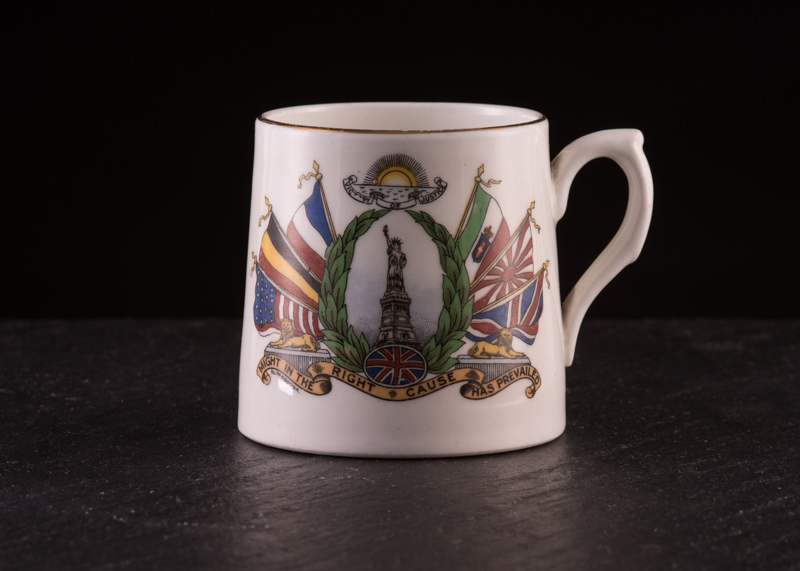Victory celebrations
Although hostilities ceased with the Armistice on 11 November 1918, the First World War did not end officially until the Treaty of Versailles was signed in June 1919. In Britain, peace was celebrated on 19 July that year, with a Victory Parade in London as the main event.
A camp for the troops taking part was set up in Kensington Gardens and thousands of civilians flocked to the capital for the festivities. Nearly 15,000 British Empire servicemen took part in the parade, led by Allied commanders including Field Marshal Sir Douglas Haig and Marshal Ferdinand Foch.
Kingsley Peace Celebration 1919
It’s unclear what if any celebrations took place in Kingsley Parish. As stated above the date officially was 19th July. However commemorative mugs produced to mark the celebration locally seem to have been misprinted as they state the date of the celebration was 19th June.
We would be grateful if anyone has any stories, eapecially Kingsley related as regards the Peace Celebrations of a century ago.


Cenotaph
The architect Sir Edwin Lutyens designed a cenotaph – an ’empty tomb’ to honour the dead – for the marching troops to salute as they passed along Whitehall.
His simple and non-denominational monument was represented on the day of the Victory Parade by a temporary structure of wood and plaster. The permanent stone memorial was unveiled on Armistice Day 1920. It is now the scene of the annual National Service of Remembrance.
Criticism
Celebrations and memorial services took place all over the country. But there was some criticism that this was too extravagant when so many ex-servicemen were now unemployed.
In Manchester, demobilised soldiers marched with slogans like ‘Honour the dead – remember the living’, and to demand ‘work not charity’.
Some argued that the money would be better spent supporting returning servicemen who had suffered physical and mental injuries.
Mutiny
At a time when revolutionary ideas were sweeping across Europe, Lord Derby’s scheme was very unpopular. On 9 December 1918, men of the Royal Artillery stationed at Le Havre burnt down several depots in a riot.
On 3 January 1919, frustrated soldiers mutinied at Folkestone when they heard they were being sent back to France. Later that month, a mutiny at Calais involving around 20,000 men witnessed the temporary formation of soldiers’ councils.
Crisis averted
In response, the new Secretary of State for War, Winston Churchill, introduced a new scheme in January 1919.
Based on age, length of service and the number of wounds a man had received, it ensured that the longest-serving soldiers were generally demobilised first.
The new system defused a dangerous political situation, although problems still occurred.
Empire troops
Demobilised Commonwealth soldiers were often left waiting for long periods until transport could be found to ship them home. In March 1919, a mutiny at a Canadian camp in Rhyl was only suppressed after several men were killed.
The men had been living in overcrowded conditions and several had died of flu during the winter. Over 40 rioters were later court-martialled. Twenty-four were tried and convicted of mutiny, but many sentences were later commuted.
On the whole, however, demobilisation was a success.
Courtesy of National Army Museum https://www.nam.ac.uk/explore/peace-and-commemoration
